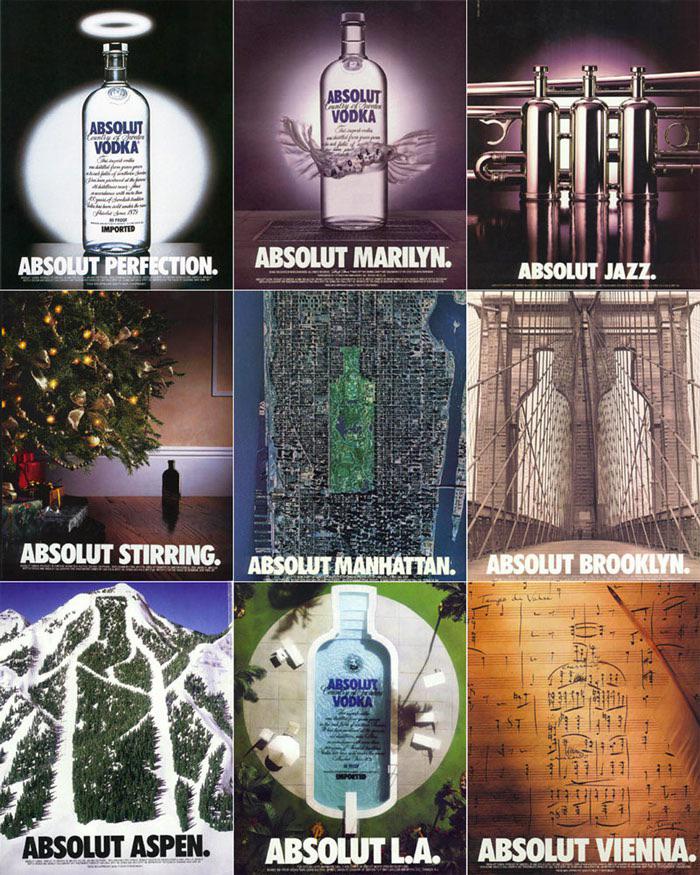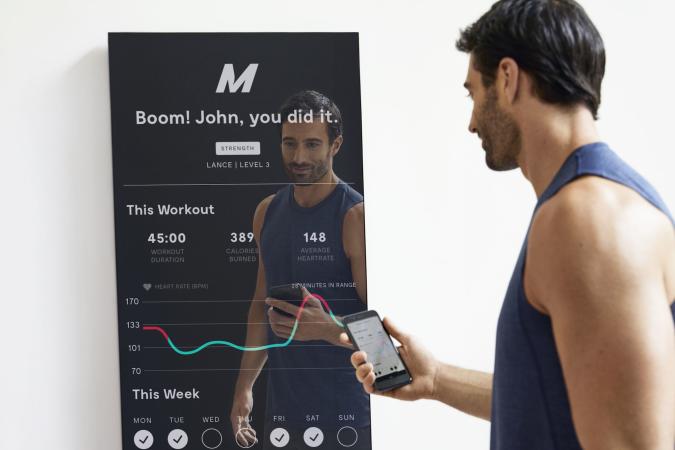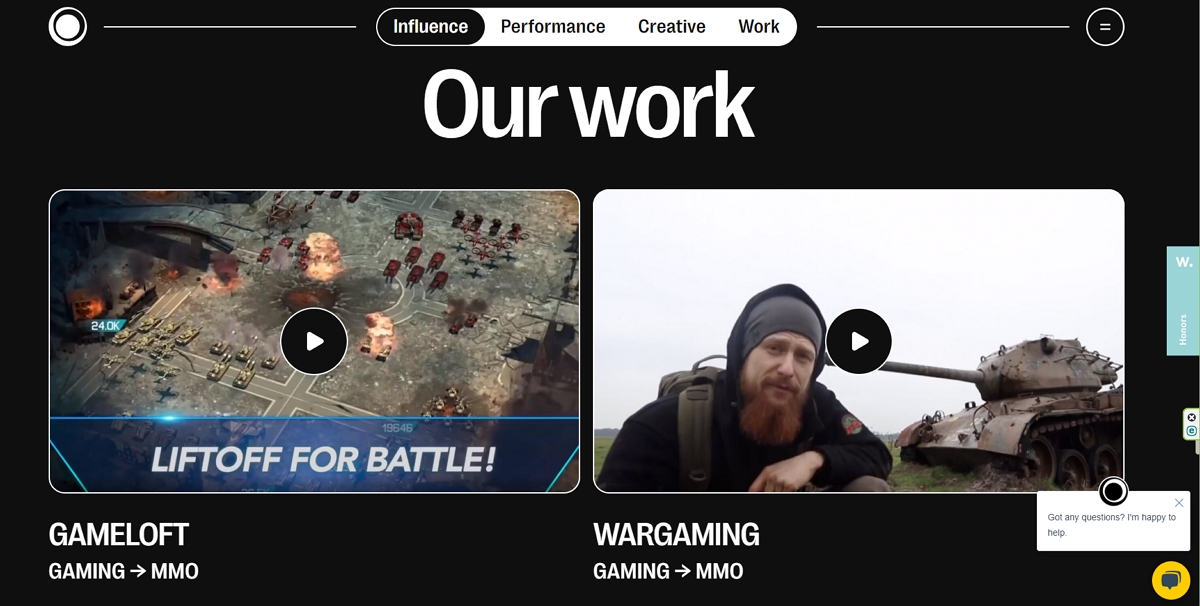Marketing Glossary (200 Terms)
Feb 12, 2024
By Ari Manor , CEO at ZOOZ

This is one in a series of articles that provide detailed and updated information about Marketing. In this specific article, which focuses on Various Marketing Terms, you can read about:
- Influencers
- Marketing Campaign
- Marketing Funnel
- Marketing Portfolio
- Marketing Glossary – 200 Terms:
| A | B | C | D | E | F | G | H | I | J | K | L | M | N |
| O | P | Q | R | S | T | U | V | W | X | Y | Z |
For additional articles about Marketing, see the Topic Menu.

Influencers
Influencers are individuals who have built a significant following on digital platforms, particularly on social media, through their content and online persona. They have the power to affect the purchasing decisions of others because of their authority, knowledge, position, or relationship with their audience. In the realm of digital marketing, influencers are often leveraged to amplify brand messages, drive engagement, and enhance brand visibility.
Here’s a more detailed look at the role of influencers and influencer marketing:
The Role of Influencers in Marketing
- Brand Endorsements: Influencers can endorse products or services to their followers, which can lead to increased brand awareness and sales.
- Content Collaboration: Brands collaborate with influencers to create sponsored content that feels authentic and resonates with the influencer’s audience.
- Product Launches: Influencers can be instrumental in generating buzz and excitement around new product launches.
- Community Engagement: They often foster a sense of community and can engage with audiences on a more personal level than traditional marketing channels.
- Trust and Credibility: Due to the perceived personal relationship between influencers and their followers, recommendations from influencers can carry significant weight.
Types of Influencers
- Mega-Influencers: Celebrities or individuals with millions of followers who can reach a massive audience.
- Macro-Influencers: Professionals with a large following in a specific niche, usually ranging from hundreds of thousands to a million followers.
- Micro-Influencers: Individuals with a smaller, more focused follower base, typically ranging from a few thousand to 100,000 followers. They are known for higher engagement rates and niche expertise.
 Illustrational Case Study: Honeycomb Hammocks Elevates Brand Through Micro-Influencer Partnerships
Illustrational Case Study: Honeycomb Hammocks Elevates Brand Through Micro-Influencer Partnerships- Company: Honeycomb Hammocks, an eco-friendly outdoor gear company, Portland, Oregon
- What Was Done: Honeycomb Hammocks collaborated with micro-influencers who embody outdoor lifestyles and environmental conservation, offering them custom hammocks to feature in their social media content. The partnership focused on authentic storytelling rather than traditional advertisements.
- Results/Impact: The influencer campaign led to a 50% increase in Instagram followers and a 30% rise in sales over six months. This approach not only boosted brand visibility but also established Honeycomb Hammocks as a community-oriented brand committed to sustainability.
- Nano-Influencers: Everyday consumers with a small number of followers who are highly engaged and considered experts in a very specific niche.
Choosing the Right Influencers
- Alignment with Brand Values: The influencer’s image and content should align with the brand’s values and aesthetic.
- Authenticity: Influencers who maintain authenticity and transparency tend to have higher engagement and trust from their followers.
- Engagement Rates: Higher engagement rates often indicate a more active and invested audience.
- Relevance: The influencer’s content and audience should be relevant to the brand’s target market.
Challenges with Influencer Marketing
- Influencer Vetting: Ensuring the influencer’s following is genuine and not inflated by bots or fake accounts.
- ROI Measurement: Measuring the return on investment of influencer campaigns can be challenging.
- Regulatory Compliance: Adhering to advertising regulations and ensuring proper disclosures for sponsored content.
The Future of Influencer Marketing
- Influencer marketing is expected to continue growing, with a trend towards long-term partnerships rather than one-off campaigns. There’s also a move towards more measurable and performance-based influencer marketing, utilizing data analytics to track the success of campaigns. Additionally, as consumers crave authenticity, there's an increasing demand for real and relatable content, which nano and micro-influencers are particularly well-positioned to provide.
In summary, influencers have become a cornerstone of modern marketing strategies, offering brands a humanized approach to reach and engage with their target audiences. By collaborating with influencers, brands can tap into established communities, leverage the trust that influencers have built, and create more impactful, relatable marketing campaigns.

Marketing Campaign
A marketing campaign is a coordinated series of steps that include the promotion of a product or service for a defined period. With the aim to reach a specific goal, such as increased brand awareness or higher sales, a marketing campaign can utilize one or multiple channels to communicate with an audience.
 Case Study: Vodka Absolut campaign
Case Study: Vodka Absolut campaign
- Company: The Absolut Company, Åhus, Sweden
- What Was Done: When a Swedish distiller of vodka wanted to enter the US market, it launched an innovative campaign in trendy magazines. The campaign featured the distinctive shape of its bottle and a title beginning with "Absolut [something]," accompanied by images reflecting various themes such as celebrities, qualities, and cities.
- Results/Impact: The campaign initially showed no results for the first two years but eventually gained traction. It lasted for 25 years, transforming a transparent and almost tasteless alcoholic drink, indistinguishable from other vodkas, into one of the top 10 global brands and the best-selling vodka for decades.
Here's a detailed examination of marketing campaigns and their critical elements:
Objectives of Marketing Campaigns
- Raising Brand Awareness: Making potential customers more aware of a brand or product.
- Generating Leads: Encouraging potential customers to express interest in a product or service.
- Boosting Sales: Directly driving sales of a product or service through targeted promotion.
- Engaging Customers: Fostering a deeper relationship with current customers to increase loyalty.
 Case Study: BarkYours’ Creative Campaign Engages Pet Lovers
Case Study: BarkYours’ Creative Campaign Engages Pet Lovers- Company: BarkYours, an online marketplace for pet-related handmade goods, New York, USA
- What Was Done: BarkYours launched a marketing campaign titled "Pets and Their People," featuring customer stories and photos showcasing their pets alongside the handmade products purchased from the platform. The campaign utilized social media, email marketing, and the company’s blog to share these stories widely.
- Results/Impact: The campaign led to a 30% increase in website traffic and a 20% uptick in sales over two months. It also enhanced community engagement, with customers more actively sharing their own stories and photos, highlighting the effectiveness of emotionally resonant marketing campaigns in building brand loyalty and driving sales.
Key Elements of a Marketing Campaign
- Target Audience: Defining who the campaign is aimed at based on demographics, interests, and behavior.
- Value Proposition: Clearly articulating the unique value that the product or service offers to the target audience.
- Key Messaging: Developing the core messages that will resonate with the audience and convey the campaign's objectives.
- Creative Content: Crafting the visual and textual content that will be used across various channels.
- Channels and Tactics: Determining which marketing channels (e.g., social media, email, TV, print) will be used and what tactics will be employed to reach the audience.
- Budget: Setting a budget that aligns with campaign goals and expected returns.
- Timeline: Creating a timeline for the campaign, including key milestones and dates for launching various elements.
- Metrics and KPIs: Establishing how success will be measured, typically through KPIs like conversion rates, engagement rates, or ROI.
Steps for Launching a Marketing Campaign
- Market Research: Understanding the market, competition, and audience to inform campaign strategy.
- Campaign Planning: Outlining the campaign's objectives, strategies, and required resources.
- Creative Development: Designing the campaign's creative elements in line with the brand identity and campaign objectives.
- Execution: Implementing the campaign according to the planned channels and tactics.
- Monitoring and Optimization: Tracking the campaign's performance and making adjustments as needed to improve results.
- Post-Campaign Analysis: Reviewing campaign performance against objectives and deriving insights for future campaigns.
Challenges in Marketing Campaigns
- Message Cut-through: Ensuring the campaign stands out in a crowded market.
 Case Study: GreenSweep’s Launch Campaign Cuts Through the Noise
Case Study: GreenSweep’s Launch Campaign Cuts Through the Noise- Company: GreenSweep, offering eco-friendly cleaning services, San Diego, California
- What Was Done: To differentiate itself in the crowded market, GreenSweep initiated a launch campaign focused on the environmental and health benefits of its services, using a mix of direct mail, local event sponsorships, and digital advertising targeting eco-conscious households.
- Results/Impact: GreenSweep’s focused campaign resulted in fully booking its services for three months within just four weeks of launch and establishing strong brand recognition in the local market as a trustworthy, eco-friendly service provider.
- Channel Integration: Seamlessly integrating the campaign across multiple channels for a consistent message.
- Resource Allocation: Efficiently managing the budget and resources to maximize campaign impact.
The Future of Marketing Campaigns
- The future of marketing campaigns lies in personalization and automation. With advancements in AI and machine learning, campaigns can become more targeted and personalized, enhancing effectiveness. Additionally, the use of big data will enable more precise measurement and optimization, while emerging technologies like AR/VR could open up new creative possibilities for campaign engagement.
In summary, marketing campaigns are the vehicles through which companies communicate the value of their offerings to targeted audiences. They are integral to achieving business goals, from launching new products to expanding into new markets. A successful marketing campaign is marked by its strategic planning, creative content, and ability to adapt and respond to live performance data.

Marketing Funnel
The marketing funnel is a model that illustrates the theoretical customer journey from the initial stages of awareness to the ultimate goal of conversion and beyond. This model helps marketers understand the mindset of their potential customers at each stage and devise appropriate strategies to influence them towards making a purchase or taking a desired action.
Here’s an in-depth look at the marketing funnel and its significance:
Stages of the Marketing Funnel
- Awareness: The top of the funnel, where potential customers first become aware of a brand or product.
- Interest: Prospective customers show interest in a product by conducting research or engaging with content.
- Consideration: Leads evaluate the product or brand against their needs and other market options.
- Intent: Potential buyers demonstrate a clear intent to purchase, such as by adding items to a shopping cart.
- Evaluation: Leads consider the final decision, possibly influenced by offers or additional information.
- Purchase: The bottom of the funnel, where a transaction is completed.
- Loyalty (Post-Purchase): Building a relationship with the customer that encourages repeat purchases and loyalty.
- Advocacy: Satisfied customers recommend the brand to others, expanding the top of the funnel for new potential customers.
Importance of the Marketing Funnel
- Customer Journey Insight: Helps marketers understand the path customers take before making a purchase.
- Targeted Strategies: Enables the creation of specific strategies tailored to each stage of the funnel.
- Measurement and Analysis: Provides a framework for measuring the effectiveness of different marketing tactics (for example, by performing AB testing).
- Resource Allocation: Informs where to allocate marketing resources and budget for the greatest impact.
Challenges with the Marketing Funnel
- Non-Linear Journeys: The customer journey isn’t always linear as the funnel suggests; customers often move back and forth between stages.
- Changing Consumer Behavior: The traditional funnel does not account for the varied paths to purchase facilitated by digital channels.
- One-Size-Fits-All: The same funnel model may not be applicable to every business or customer base.
Modern Interpretations of the Funnel
- The Marketing Flywheel: An alternative model that emphasizes customer retention and word-of-mouth over the linear journey of the funnel.
- The Customer Decision Journey: A McKinsey model that accounts for the circular journey of evaluation and post-purchase experience.
Leveraging the Marketing Funnel
- Content for Each Stage: Develop content strategies that address the needs and questions of potential customers at each stage.
 Case Study: Dr. Ruth Roberts' Sales Funnel Success
Case Study: Dr. Ruth Roberts' Sales Funnel Success- Company: Dr. Ruth Roberts, Integrative Veterinarian
- What Was Done: Dr. Ruth Roberts, an integrative veterinarian, significantly boosted her e-commerce conversions by implementing a high-quality sales funnel. The sales funnel was centered around a live-action video sales letter, crafted by Sumer Copywriting, which served as the "nucleus" of the campaign. The video provided valuable information tailored to pet owners, addressing how to improve the lives of their sick pets. To capture leads, blog posts offering pet care advice and Facebook ads were used to generate awareness. An opt-in incentive video encouraged prospects to enter their email addresses. A comprehensive lead nurturing campaign followed, featuring sales emails that highlighted important facts, offered advice, told stories, and provided no-strings-attached gifts. This approach built a relationship with the audience before attempting to make a sale.
- Results/Impact: The results of this sales funnel implementation were impressive:
- 541 new email list subscribers from $950 in ad spend
- 23 active subscriptions generating recurring revenue of $730/month
- Initial sales totaling $3,568
- $15,000 in total online revenue in one month from other promotional efforts
- Conversion Optimization: Use the funnel to identify drop-off points and optimize for better conversion through each stage.
 Case Study: FitTech’s Conversion-Focused Funnel Optimization
Case Study: FitTech’s Conversion-Focused Funnel Optimization- Company: FitTech, a startup selling fitness technology products, Austin, Texas
- What Was Done: FitTech redesigned its marketing funnel to better guide potential customers from awareness to purchase. This included targeted content marketing for awareness, free trials for consideration, and personalized follow-ups for decision-making, all supported by a streamlined, user-friendly website.
- Results/Impact: Post-implementation, FitTech saw a 50% improvement in conversion rates and a 35% increase in customer retention, demonstrating the effectiveness of a well-structured marketing funnel in driving conversions and fostering customer loyalty.
- Personalization: Tailor marketing messages and experiences based on the customer’s stage in the funnel to increase relevance and engagement.
 Case Study: FitFam’s Personalized Funnel Approach Increases Membership
Case Study: FitFam’s Personalized Funnel Approach Increases Membership- Company: FitFam, a local gym specializing in family fitness programs, Melbourne, Australia
- What Was Done: FitFam developed a marketing funnel tailored to family fitness needs, starting with social media ads targeting families, followed by free family fitness consultation offers, and ending with personalized membership plans. The funnel was supported by testimonials and success stories from existing members.
- Results/Impact: This personalized marketing funnel approach led to a 50% increase in new memberships within six months, highlighting the effectiveness of tailoring marketing funnels to specific customer segments and needs.
Apps for Measuring the Marketing Funnel
Here are several popular tools for tracking customer interactions from awareness to conversion and beyond:
- Google Analytics: A comprehensive tool that allows you to measure sales and conversions, as well as gain insights into how visitors use your site, how they arrived on your site, and how you can keep them coming back.
- HubSpot: Offers a full stack of software for marketing, sales, and customer service, with a completely free CRM at its core. It’s widely used for tracking customer interactions and effectively managing the marketing funnel.
- Salesforce: Provides a customer relationship management (CRM) solution that brings companies and customers together. It's one of the most comprehensive tools for managing and measuring customer interactions and progress through the marketing funnel.
- Kissmetrics: A customer engagement automation platform that provides behavioral analytics and email campaign automation to understand and engage customers. It is particularly useful for e-commerce and SaaS companies.
- Hotjar: A powerful tool to analyze website use and improve conversion rates, Hotjar offers heatmaps, session recordings, and surveys to understand user behavior.
- Crazy Egg: Helps you analyze the behavior of your website visitors through heatmaps, scroll maps, referral maps, and an array of other tools. It’s useful for optimizing the conversion paths on your website.
- Mixpanel: An analytics platform for mobile and web, Mixpanel helps businesses to analyze the actions people take in their application. It’s great for tracking users across the marketing funnel.
- Leadfeeder: Shows you the companies visiting your website, how they found you, and what they’re interested in. It’s beneficial for B2B companies looking to enhance lead generation and tracking through the funnel.
The marketing funnel remains a valuable framework for understanding customer behavior and guiding the development of effective marketing strategies. While the specifics of the model may evolve with consumer behavior and technology, the fundamental principle of guiding potential customers towards a decision remains the cornerstone of effective marketing.

Marketing Portfolio
A marketing portfolio is a curated collection of a marketer's best work, strategies, campaigns, analytics, and other relevant documents that showcase their skills, experience, and professional growth in the field. It is used to demonstrate their abilities to potential employers, clients, or during performance evaluations. New businesses often create it as an initial part of their marketing communications efforts, along with their stationery and website.
 Case Study: TinyTots Toy Co. - Expanding Reach with a Diverse Portfolio
Case Study: TinyTots Toy Co. - Expanding Reach with a Diverse Portfolio
- Company: TinyTots Toy Co., a small business specializing in educational toys for children, based in Madison, Wisconsin
- What Was Done: TinyTots Toy Co. diversified its marketing portfolio by including a variety of marketing tactics tailored to reach parents and educators. This included educational blog posts, interactive social media campaigns featuring product uses in real classrooms, and partnerships with local schools for product demonstrations.
- Results/Impact: By expanding its marketing portfolio to cover multiple channels and strategies, TinyTots saw a 35% increase in direct online sales and a 25% increase in their products being adopted by local educational institutions within a year. The success of TinyTots illustrates the effectiveness of a diversified marketing portfolio in reaching broader audiences and enhancing brand engagement.
Here's a comprehensive look at what a marketing portfolio includes and its importance:
Components of a Marketing Portfolio
- Work Samples: Examples of successful campaigns, content pieces, designs, or projects that the marketer has developed or contributed to significantly.
 Case Study: Zorka Agency's Website
Case Study: Zorka Agency's Website- Company: Zorka Agency revamped their website to highlight their diverse marketing services, especially influencer marketing. The site features a futuristic, sleek black design with white typography, catering to dark mode enthusiasts. Using the Roboto UI font, the site maintains a clean, minimalistic appeal enhanced by micro animations. The homepage includes an animated backdrop of traveling stars, a compelling tagline, and a dynamic title. Interactive link cards in the hero section navigate users to influencer marketing, performance marketing, creativity, and the portfolio. Infographics on worldwide operations add a global touch.
- Results/Impact: The portfolio segment is a central feature, showcasing extensive work, client achievements, and collaborative results. Users can explore a vast list of projects, with three curated cases offering immediate insights via interactive cards. The site also provides a user-friendly feature allowing project details to expand on the same page with a simple click.
- Case Studies: Detailed accounts of particular marketing challenges, the strategies implemented to address them, and the outcomes achieved.
- Analytics: Data and performance metrics that illustrate the marketer's ability to drive results and make data-driven decisions.
- Testimonials: Feedback and endorsements from clients, colleagues, or supervisors that validate the marketer's expertise and impact.
- Awards and Recognition: Any industry awards or formal recognition received for marketing excellence.
- Professional Development: Certifications, courses, or workshops attended, which show a commitment to staying current with marketing trends and techniques.
- Personal Branding Elements: Elements that demonstrate the marketer's unique value proposition, such as a personal logo, tagline, or mission statement.
Importance of a Marketing Portfolio
- Demonstrating Skills: A portfolio is a tangible way to showcase your skills and what you can bring to a potential employer or client.
- Building Credibility: It helps establish credibility by providing proof of your accomplishments and capabilities.
- Differentiating Yourself: In a competitive field, a well-constructed portfolio sets you apart from other marketers.
 Illustrative Case Study: EcoWrite, Sustainable Stationery Start-Up
Illustrative Case Study: EcoWrite, Sustainable Stationery Start-Up- Company: EcoWrite, a start-up offering eco-friendly stationery products, Boulder, Colorado
- What Was Done: EcoWrite developed a marketing portfolio that not only showcased its range of sustainable products but also highlighted the environmental impact of each purchase, such as tree planting initiatives. The portfolio was shared across digital platforms, trade shows, and eco-conscious community events.
- Results/Impact: This approach helped EcoWrite establish a strong brand identity within the green product market, resulting in a 45% increase in B2B partnerships and a notable rise in consumer sales. EcoWrite's portfolio demonstrated the power of aligning product showcases with core brand values to resonate with target markets.
- Reflecting Growth: It reflects personal and professional growth, illustrating how you've evolved and expanded your skillset over time.
Tips for Creating a Marketing Portfolio
- Choose Quality Over Quantity: Include only your best work that effectively showcases your range of skills and successes.
- Tell a Story: Organize your portfolio to tell a story about your career journey, including challenges you've overcome and the results you've achieved.
- Stay Current: Regularly update your portfolio with new work and remove older items that no longer represent your best work.
- Go Digital: Create a digital portfolio that is easily accessible and shareable online, such as a personal website or a professional social media profile like LinkedIn.
- Be Strategic: Tailor the content of your portfolio to the types of roles or projects you are targeting in your job search or business development efforts.
Challenges with a Marketing Portfolio
- Selection of Work: Deciding which projects to include can be challenging, especially if you have a broad range of experience.
 Case Study: Kloe May Photography’s Portfolio Attracts Niche Weddings
Case Study: Kloe May Photography’s Portfolio Attracts Niche Weddings- Company: Kloe May Photography, a boutique wedding photographer, Pulborough, UK
- What Was Done: Kloestrategically curated her marketing portfolio to highlight her expertise in capturing intimate, non-traditional weddings. By showcasing a diverse array of ceremonies in various settings, the portfolio emphasized her adaptability and unique artistic vision.
- Results/Impact: The specialized focus of the portfolio attracted clients seeking personalized wedding photography, leading to a 60% increase in bookings for niche weddings. Kloe's success illustrates how a well-curated marketing portfolio can effectively communicate a business’s unique strengths and attract its ideal clientele.
- Measuring Impact: It can be difficult to quantify the impact of certain marketing activities, particularly if the results are not directly attributable to one's efforts.
- Maintaining Confidentiality: Ensuring that sensitive information or proprietary strategies from past projects are not disclosed.
In conclusion, a marketing portfolio is an essential tool for any marketing professional. It allows you to present a concrete record of your professional achievements and the breadth of your capabilities. It serves not only as a reflection of past successes but also as a roadmap of potential for future opportunities. Whether you are job hunting, seeking to attract new clients, or looking to establish your personal brand, a well-crafted marketing portfolio is invaluable.

Marketing Glossary – 200 Terms
Here you will find 200 Marketing term definitions and explanations. These terms cover almost every aspect of Marketing.
If you want to finds out more about any of these terms terms you can click on the links suggesting futher reading (many of the terms have full articles about them in our website), or search for further details about this these terms here.
You can also suggest additional marketing terms to add to this gloassary, by contacting us here.
We hope you will find this marketing gloassary useful, and wish you a succesful and rewarding day!

- A/B Testing: A method of comparing two versions of a webpage, email, or ad to determine which one performs better. It's used to test variables like headlines, images, and calls to action to optimize results.
- Above the Fold: The portion of a webpage that is visible without scrolling. This area is crucial as it grabs the user's attention first and can significantly impact engagement.
- Ad Copy: The written content of an advertisement designed to persuade potential customers. Good ad copy is clear, concise, and compelling, encouraging the reader to take action.
- Ad Exchange: A digital marketplace where advertisers and publishers buy and sell ad space through real-time auctions. It helps automate the buying process and target specific audiences.
- Ad Impressions: The number of times an advertisement is displayed on a webpage, regardless of whether it was clicked. It's a common metric to measure the reach of an ad.
- Ad Network: A company that connects advertisers with websites that want to host advertisements. It aggregates ad space from publishers and sells it to advertisers, often with targeting options.
- Ad Rank: A value used by search engines to determine the position of an ad on the search results page. It's calculated based on the bid amount, ad quality, and expected impact.
- Ad Retargeting: A strategy that shows ads to users who have previously visited your website. It aims to bring back visitors who didn't make a purchase or take action on their initial visit.
- Ad Spend: The amount of money a company allocates to its advertising budget. It's used to track and manage the cost of running ad campaigns across different media.
- AdWords: Google's advertising platform that allows businesses to create ads that appear in Google search results. Advertisers bid on keywords, and ads are shown based on relevancy and bid amount.
- Affiliate Marketing: A performance-based marketing strategy where a business rewards affiliates for driving traffic or sales through their marketing efforts. Affiliates earn a commission for each sale made through their referral.
- Affiliate Network: A platform that connects advertisers with affiliates who promote their products or services. Affiliate networks facilitate the management of affiliate marketing programs.
- Algorithm Update: Changes made to the algorithms used by search engines to rank content. Algorithm updates can impact website rankings and require SEO adjustments.
- Algorithm: A set of rules or instructions used by computers to solve problems or make decisions. In marketing, algorithms determine how content is ranked and displayed, such as in search engines or social media feeds.
- Alt Text: Text descriptions added to images on a website to improve accessibility and help search engines understand the content of the image. It appears when an image fails to load or is read by screen readers for visually impaired users.
- Ambush Marketing: A marketing strategy where a brand associates itself with an event without paying sponsorship fees. Ambush marketing aims to gain exposure and attention without official endorsement.
- Analytics: The systematic analysis of data to understand and optimize marketing performance. It involves tracking metrics like website traffic, conversion rates, and user behavior to make informed decisions. Read more.
- Attribution: The process of identifying which marketing channels or campaigns contributed to a sale or conversion. It helps marketers understand the effectiveness of their efforts and allocate resources efficiently.
- Attrition Rate: The rate at which customers stop using a product or service over a specific period. High attrition rates indicate customer dissatisfaction and the need for retention strategies.
- Audience Segmentation: Dividing a larger audience into smaller groups based on shared characteristics, such as demographics or behavior. This allows for more targeted and personalized marketing efforts. Read more.
- Augmented Reality (AR): Technology that overlays digital information, such as images or sounds, onto the real world. It enhances the user's experience by adding interactive elements to their physical environment.

- B2B (Business to Business): Transactions where businesses sell products or services to other businesses. Marketing. In this context often focuses on building relationships and demonstrating value to professional buyers.
- B2B Marketing: Marketing activities focused on selling products or services to other businesses. B2B marketing emphasizes building relationships and demonstrating value to professional buyers. Read more.
- B2C (Business to Consumer): Transactions where businesses sell products or services directly to consumers. Marketing strategies here focus on appealing to individual preferences and emotions to drive sales.
- B2C Marketing: Marketing activities focused on selling products or services directly to consumers. B2C marketing often appeals to emotions and individual preferences to drive sales. Read more.
- Backlink: A link from one website to another, which is important for search engine optimization (SEO). Backlinks can improve a website's authority and ranking on search engine results pages.
- Banner Ad: A rectangular graphic display that stretches across the top, bottom, or sides of a webpage. Banner ads are used to drive traffic to a website or promote brand awareness.
- Behavioral Segmentation: Dividing a market into segments based on consumer behavior, such as purchase history, brand loyalty, and usage patterns. Behavioral segmentation allows for more personalized marketing.
- Behavioral Targeting: A technique that uses data on a user’s past behavior, such as pages visited or clicks, to show relevant ads. It aims to increase ad effectiveness by reaching users with tailored messages.
- Benchmarking: The process of comparing your business performance against industry standards or competitors. It helps identify areas for improvement and best practices to adopt.
- Big Data: Extremely large data sets that require advanced methods to analyze. In marketing, big data helps in understanding customer behavior, predicting trends, and making data-driven decisions. Read more.
- Black Hat SEO: Unethical SEO practices that violate search engine guidelines to boost a site's ranking. Techniques include keyword stuffing, cloaking, and using private link networks, which can lead to penalties.
- Blogging: Writing and publishing articles on a website to share information, build authority, and engage with an audience. Blogs can help drive traffic and improve SEO.
- Bounce Rate: The percentage of visitors who leave a website after viewing only one page. A high bounce rate may indicate that the site content or user experience needs improvement.
- Brand Advocacy: When satisfied customers promote your brand to others, often through word-of-mouth or social media. Brand advocates can help build trust and attract new customers.
- Brand Architecture: The structure and organization of a company's brands, including the relationships between parent and sub-brands. Effective brand architecture helps manage brand identity and strategy.
- Brand Awareness: The extent to which consumers recognize and remember a brand. High brand awareness can lead to increased customer trust and sales.
- Brand Equity: The value a brand adds to a product based on consumer perception. Strong brand equity can result in customer loyalty, premium pricing, and competitive advantage.
- Brand Experience: The cumulative impact of all interactions a consumer has with a brand. Positive brand experiences build loyalty and create lasting impressions.
- Brand Identity: The visual and verbal elements that represent a brand, including logos, colors, and messaging. It helps create a distinct image and personality for the brand.
- Brand Loyalty Programs: Programs designed to reward repeat customers and encourage continued patronage. Loyalty programs can include points systems, discounts, and exclusive offers.
- Brand Loyalty: When customers consistently choose your brand over competitors. High brand loyalty can lead to repeat sales and long-term success.
- Brand Positioning: The process of establishing a brand's image and value proposition in the minds of consumers. Effective positioning differentiates a brand from its competitors.
- Brand Recall: The ability of consumers to remember a brand when prompted by a product category. High brand recall indicates strong brand awareness and presence.
- Brand Recognition: The ability of consumers to identify a brand by its attributes, such as logo, packaging, or jingle. High brand recognition often leads to stronger brand loyalty.
- Brand Strategy: A long-term plan for developing a successful brand. It includes defining the brand's mission, values, target audience, and key messages.
- Branded Content: Content created by a brand that provides value to the audience while subtly promoting the brand. Branded content aims to engage and entertain without overt advertising.
- Buyer Persona: A detailed description of a fictional ideal customer based on market research. It helps businesses understand and target their audience more effectively.
- Buying Cycle: The process customers go through before making a purchase, typically including awareness, consideration, and decision stages. Understanding the buying cycle helps tailor marketing efforts.
- Buzz Marketing: A strategy that creates excitement and word-of-mouth around a brand or product. Buzz marketing often involves creating shareable and attention-grabbing content.

- Call to Action (CTA): A prompt in marketing materials that encourages the audience to take a specific action, such as "Buy Now" or "Sign Up." Effective CTAs can drive conversions.
- Campaign Management: The process of planning, executing, and analyzing marketing campaigns. It involves coordinating different marketing activities to achieve specific goals.
- Channel Marketing: Strategies used to market products through various distribution channels, such as retail, online, or direct sales. Effective channel marketing ensures products reach the right customers. Read more.
- Churn Rate: The percentage of customers who stop using a product or service over a specific period. Reducing churn rate is crucial for maintaining a stable customer base.
- Clickbait: Attention-grabbing headlines or thumbnails designed to entice users to click on content. Clickbait can lead to high click-through rates but may disappoint users if the content doesn't match expectations.
- Click-Through Rate (CTR): The percentage of people who click on an ad after seeing it. A higher CTR indicates that the ad is effective in attracting attention and interest.
- Client Relationship Management (CRM): A system for managing interactions with current and potential customers. CRM tools help improve customer relationships and streamline sales processes.
- Cohort Analysis: A method of analyzing the behavior of specific groups of users over time. It helps identify patterns and trends within different segments of a customer base.
- Competitive Analysis: The process of evaluating competitors' strengths and weaknesses. Competitive analysis helps identify opportunities and threats and informs strategic planning. Read more.
- Consumer Behavior: The study of how individuals make purchasing decisions. Understanding consumer behavior helps marketers develop strategies that align with customer needs and preferences.
- Content Calendar: A schedule that outlines the planning, creation, and publication of content. Content calendars help organize and streamline content marketing efforts.
- Content Curation: The process of finding, selecting, and sharing high-quality content from various sources. Content curation adds value by providing useful information to the audience.
- Content Management System (CMS): Software used to create, manage, and modify digital content, such as websites and blogs. Popular CMS platforms include WordPress and Joomla.
- Content Marketing: Creating and sharing valuable content to attract and engage a target audience. It aims to build trust and drive profitable customer actions.
- Content Strategy: The planning and management of content creation, delivery, and governance. A strong content strategy ensures that content aligns with business goals and audience needs.
- Context Marketing: Delivering relevant content to users based on their current context, such as location, time, or behavior. Context marketing aims to provide timely and personalized experiences.
- Contextual Advertising: Ads that are displayed based on the content of the webpage being viewed. This type of advertising aims to show relevant ads to users based on the context they are in.
- Conversion Funnel: A model that represents the stages a prospect goes through before becoming a customer. The conversion funnel includes stages like awareness, interest, consideration, and purchase. Read more.
- Conversion Rate Optimization (CRO): The process of increasing the percentage of visitors who take a desired action on a website. CRO involves testing and optimizing various elements, like design and content.
- Conversion Rate: The percentage of visitors who complete a desired action, such as making a purchase or signing up for a newsletter. Improving conversion rates is a key goal in marketing.
- Cookies: Small pieces of data stored on a user's device by a website. Cookies help track user behavior, remember login information, and personalize user experiences. Read about "Marketing without cokies".
- Copywriting: The craft of writing persuasive text for advertisements and marketing materials. Good copywriting can attract attention, generate interest, and drive action. Read more.
- Cost Per Acquisition (CPA): The amount of money spent on acquiring a new customer. It is calculated by dividing the total cost of a marketing campaign by the number of conversions.
- Cost Per Click (CPC): The price paid by an advertiser for each click on their ad. CPC is a common pricing model in online advertising, used to drive traffic to websites.
- Cost Per Mille (CPM): The cost of 1,000 ad impressions. It is a standard metric used to measure the cost-effectiveness of advertising campaigns.
- Cost Per Thousand (CPT): Another term for Cost Per Mille (CPM), referring to the cost of 1,000 ad impressions.
- Crisis Communication: Strategies and tactics used to manage and mitigate negative publicity or events that could harm a brand's reputation. Effective crisis communication involves timely and transparent messaging.
- Cross-Promotion: A marketing strategy where two or more companies promote each other’s products. It helps reach a broader audience and increase brand exposure.
- Customer Acquisition: The process of gaining new customers through marketing and sales efforts. Effective customer acquisition strategies are crucial for business growth.
- Customer Advocacy: When satisfied customers actively promote and recommend a brand to others. Customer advocacy is a powerful form of word-of-mouth marketing.
- Customer Feedback: Information provided by customers about their experiences with a product or service. Customer feedback helps identify areas for improvement and informs business decisions.
- Customer Journey: The series of interactions a customer has with a brand, from awareness to purchase and beyond. Understanding the customer journey helps improve the overall customer experience.
- Customer Lifetime Value (CLV): The total revenue a business expects to earn from a customer over their entire relationship. CLV helps determine the long-term value of customer acquisition and retention strategies.
- Customer Retention Rate: The percentage of customers who continue to use a product or service over a specific period. High retention rates indicate customer satisfaction and loyalty.
- Customer Retention: The practice of keeping existing customers engaged and loyal to a brand. High customer retention rates indicate satisfied customers and successful retention strategies.
- Customer Satisfaction: A measure of how well a product or service meets or exceeds customer expectations. High customer satisfaction often leads to repeat business and positive word-of-mouth.
- Customer Segmentation: The process of dividing customers into groups based on shared characteristics. Segmentation allows for more targeted and personalized marketing efforts. Read more.
- Customer Value Proposition (CVP): A statement that explains the benefits a customer can expect from a product or service. A strong CVP clearly communicates why a product is valuable and differentiates it from competitors. Read about Value Proposition Canvas.

- Data Mining: The process of analyzing large data sets to discover patterns and insights. Data mining helps marketers understand customer behavior and make data-driven decisions.
- Data-Driven Marketing: Marketing strategies that are based on data analysis and insights. Data-driven marketing helps make more informed decisions and improve campaign effectiveness. Read more.
- Demand Generation: Marketing activities that create awareness and interest in a product or service. Demand generation aims to attract new prospects and nurture them into customers.
- Demographic Segmentation: Dividing a market into segments based on demographic factors like age, gender, income, education, and occupation. It helps target specific audience groups more effectively.
- Digital Marketing: Marketing efforts that use digital channels like websites, social media, email, and search engines to reach and engage with consumers. It includes various tactics like SEO, PPC, and content marketing. Read more.
- Direct Mail: A marketing method that involves sending physical mail, such as brochures, catalogs, or postcards, to potential customers. Direct mail can be effective for targeting specific audiences.
- Direct Marketing: A type of marketing that communicates directly with consumers, often through mail, email, or telemarketing. The goal is to generate a direct response, such as a purchase or inquiry. Read more.
- Display Advertising: Online ads that appear on websites, apps, or social media platforms. Display ads can be images, videos, or interactive elements designed to attract attention and drive traffic.
- Drip Marketing: A series of automated emails sent to prospects over time to nurture leads and guide them through the sales funnel. Drip campaigns deliver relevant content based on the recipient's actions or stage in the buyer's journey.
- Dynamic Content: Web content that changes based on user behavior, preferences, or other data. Dynamic content provides a personalized experience to each user, increasing engagement and conversions.

- E-commerce: The buying and selling of goods or services over the internet. E-commerce includes online retail stores, marketplaces, and digital transactions.
- Email Marketing: Sending targeted emails to a group of recipients to promote products, services, or content. Effective email marketing can build relationships, drive sales, and increase brand loyalty.
- Emotional Branding: Creating a brand that connects with consumers on an emotional level. Emotional branding aims to build strong, lasting relationships by appealing to feelings and values.
- Engagement Metrics: Measures of how users interact with content, such as likes, shares, comments, and clicks. Engagement metrics indicate the effectiveness of content in capturing audience interest.
- Engagement Rate: A metric that measures the level of interaction between a brand and its audience. Engagement can include likes, shares, comments, and other actions that indicate active participation.
- Evergreen Content: Content that remains relevant and valuable over time. Evergreen content continues to attract traffic and engagement long after it's published.
- Experiential Marketing: Creating memorable experiences that engage consumers and create a connection with the brand. Experiential marketing often involves events, interactive installations, and hands-on activities.
- Eye Tracking: A technology that measures where and how long a user looks at different parts of a webpage or ad. Eye tracking helps optimize design and content placement for better engagement.

- Freemium Model: A business model where basic services are provided for free, while advanced features or premium services are offered for a fee. Freemium models attract users and encourage upgrades.
- Funnel: A model that represents the stages a customer goes through from awareness to purchase. The marketing funnel helps visualize and optimize the customer journey. Read more.

- Geofencing: A location-based marketing strategy that uses GPS or RFID technology to create a virtual boundary. When a user enters this area, they can receive targeted ads or notifications.
- Geographic Segmentation: Dividing a market into segments based on geographic location, such as country, region, or city. Geographic segmentation helps tailor marketing efforts to local preferences and needs.
- Geotargeting: Delivering content or ads to users based on their geographic location. Geotargeting helps reach local audiences with relevant messages.
- Guerilla Marketing: An unconventional marketing strategy that aims to create a big impact with a small budget. Guerilla marketing often involves creative, unexpected tactics to grab attention.

- Hashtag: A keyword or phrase preceded by the # symbol, used on social media to categorize content and make it discoverable. Hashtags help increase visibility and engagement.
- Heatmap: A visual representation of data showing where users click, scroll, or move their mouse on a webpage. Heatmaps help understand user behavior and optimize website design.

- Inbound Marketing: A strategy that attracts customers by creating valuable content and experiences tailored to them. Inbound marketing focuses on building relationships and providing solutions, rather than pushing sales. Read more.
- Influencer Marketing: Collaborating with individuals who have a significant following on social media to promote products or services. Influencers can help reach a wider audience and build credibility. Read more.
- Infographic: A visual representation of information or data designed to make complex information easy to understand. Infographics are often used to share statistics, processes, or key points in a visually appealing way.
- Instant Messaging Marketing: Using messaging apps to communicate with customers and prospects. This type of marketing allows for real-time, personalized interactions.
- Integrated Marketing: A strategy that ensures all marketing efforts are aligned and work together to create a cohesive message. Integrated marketing combines various channels and tactics for maximum impact.
- Interactive Content: Content that requires user participation, such as quizzes, polls, or interactive videos. Interactive content engages users and provides a more personalized experience.

- Key Performance Indicator (KPI): A measurable value that indicates how well a company is achieving its business objectives. KPIs help track progress and inform decision-making. Read more.
- Keyword Research: The process of finding and analyzing the keywords that people use to search for information online. Keyword research helps optimize content for search engines and attract the right audience.

- Landing Page: A standalone web page created specifically for a marketing or advertising campaign. Its purpose is to drive visitors to take a specific action, such as filling out a form or making a purchase.
- Lead Generation: The process of attracting and converting strangers into potential customers. Lead generation strategies include content marketing, social media, and email campaigns. Read about "qualified leads".
- Lead Nurturing: Building relationships with potential customers at every stage of the sales funnel. Lead nurturing involves providing relevant content and information to guide prospects toward making a purchase.
- Lead Scoring: A method of ranking leads based on their likelihood to convert. Lead scoring helps prioritize sales efforts and allocate resources effectively.
- Lifetime Value (LTV): The total revenue a business expects to earn from a customer over their entire relationship. LTV helps determine the long-term value of customer acquisition and retention strategies.
- Lookalike Audience: A group of people who resemble your existing customers or leads. Lookalike audiences are used in advertising to find new potential customers with similar characteristics.
- Loyalty Program: A rewards program designed to encourage repeat business by offering incentives to loyal customers. Loyalty programs can include discounts, points, or exclusive offers.

- Market Penetration: A strategy to increase sales of existing products in existing markets. Market penetration aims to capture a larger share of the market by attracting competitors' customers or increasing product usage. Read more.
- Market Research: The process of gathering, analyzing, and interpreting information about a market, including information about potential customers and competitors. Market research helps businesses make informed decisions about product development, pricing, and marketing strategies. Read more.
- Market Segmentation: The process of dividing a broad consumer or business market into sub-groups based on shared characteristics. Market segmentation allows for more precise targeting of marketing efforts to meet the specific needs of different groups. Read more.
- Marketing Automation: The use of software to automate repetitive marketing tasks, such as email campaigns, social media posting, and ad management. Marketing automation helps streamline workflows and improve efficiency. Read more.
- Marketing Funnel: A model that illustrates the stages a customer goes through from first becoming aware of a product to making a purchase. The funnel typically includes stages like awareness, interest, consideration, and decision. Read more.
- Marketing Mix: The set of actions or tactics that a company uses to promote its brand or product in the market. The marketing mix is often described as the 4 Ps: Product, Price, Place, and Promotion. Read more.
- Marketing Plan: A comprehensive document that outlines a company's marketing strategy and tactics for a specific period. A marketing plan includes objectives, target market, positioning, and action plans. Read more.
- Marketing Qualified Lead (MQL): A lead that has been deemed more likely to become a customer compared to other leads based on predefined criteria. MQLs are typically identified through engagement with marketing materials and readiness to speak to sales. Read more.
- Marketing ROI: A measure of the return on investment from marketing activities. It is calculated by comparing the revenue generated from marketing campaigns to the cost of those campaigns.
- Media Buy: The process of purchasing advertising space or time on various media channels, such as TV, radio, print, or digital. Media buying aims to reach the target audience effectively and efficiently.
- Media Planning: The process of selecting the most appropriate media channels to achieve marketing objectives. Media planning involves analyzing target audience, budget, and media options.
- Mobile Marketing: Marketing activities designed to reach consumers on their mobile devices, such as smartphones and tablets. Mobile marketing includes SMS marketing, mobile apps, and mobile-optimized websites.
- Multi-Channel Marketing: A strategy that uses multiple channels, such as email, social media, and direct mail, to reach and engage customers. Multi-channel marketing aims to provide a seamless customer experience across different touchpoints.

- Native Advertising: Ads that match the form and function of the platform on which they appear. Native ads are designed to blend in with the content, making them less intrusive and more engaging.
- Net Promoter Score (NPS): A metric used to measure customer loyalty and satisfaction. NPS is calculated based on responses to the question: "How likely are you to recommend our product/service to a friend or colleague?"
- Newsjacking: The practice of capitalizing on current events or news stories to promote a brand or product. Newsjacking involves creating timely and relevant content that ties into the trending topic.
- Niche Marketing: Focusing marketing efforts on a specific, well-defined segment of the market. Niche marketing targets a small, specialized group of customers with unique needs and preferences.

- Omnichannel Marketing: A strategy that integrates all marketing channels to create a cohesive and seamless customer experience. Omnichannel marketing ensures consistency and continuity across online and offline channels.
- Organic Reach: The number of people who see your content without paid promotion. Organic reach is achieved through high-quality content, SEO, and engagement with your audience.
- Out-of-Home Advertising (OOH): Advertising that reaches consumers while they are outside their homes, such as billboards, transit ads, and digital signage. OOH advertising aims to capture attention in public spaces.

- Paid Search: Advertising on search engines where advertisers pay each time their ad is clicked. Paid search, often referred to as pay-per-click (PPC), helps drive traffic to websites based on keyword targeting.
- Pay Per Click (PPC): An online advertising model where advertisers pay each time a user clicks on their ad. PPC is commonly used in search engine and social media advertising to drive targeted traffic.
- Personalization: Customizing marketing messages and experiences for individual users based on their preferences, behavior, and data. Personalization aims to increase engagement and conversion rates.
- Point of Sale (POS): The location where a transaction occurs, such as a retail store checkout or an online shopping cart. POS systems are used to process sales and track inventory.
- Positioning: The process of establishing a brand or product's unique place in the market and in the minds of consumers. Effective positioning differentiates a brand from its competitors and highlights its value.
- Predictive Analytics: The use of data, statistical algorithms, and machine learning techniques to identify the likelihood of future outcomes. Predictive analytics helps marketers anticipate customer behavior and trends.
- Programmatic Advertising: The automated buying and selling of digital advertising using technology and algorithms. Programmatic advertising allows for precise targeting and real-time bidding.
- Promotional Mix: The combination of promotional tools and strategies used to communicate with the target audience. The promotional mix includes advertising, sales promotion, public relations, personal selling, and direct marketing.
- Public Relations (PR): The practice of managing and influencing public perception of a brand or organization. PR activities include media relations, press releases, events, and crisis management. Read more.
- Publisher: An individual or organization that creates and distributes content. In advertising, publishers sell ad space on their platforms to advertisers.

- Qualified Lead: A lead that has been identified as having a high potential to become a customer based on specific criteria. Qualified leads are often categorized as marketing qualified leads (MQLs) or sales qualified leads (SQLs). Read more.

- Real-Time Bidding (RTB): A type of programmatic advertising where ad impressions are bought and sold in real-time auctions. RTB allows advertisers to bid on individual ad impressions as they are served.
- Referral Marketing: A strategy that encourages customers to refer new customers to a business. Referral marketing often includes incentives, such as discounts or rewards, for both the referrer and the new customer.
- Reputation Management: The practice of monitoring and influencing how a brand is perceived by the public. Reputation management involves managing online reviews, social media presence, and public relations efforts.
- Responsive Design: A web design approach that ensures a website looks and functions well on all devices, including desktops, tablets, and smartphones. Responsive design improves user experience and accessibility.
- Return on Advertising Spend (ROAS): A metric that measures the revenue generated from advertising compared to the cost of the ads. ROAS helps evaluate the effectiveness and profitability of advertising campaigns.
- Return on Investment (ROI): A measure of the profitability of an investment, calculated by comparing the returns to the costs. In marketing, ROI helps determine the success of campaigns and strategies.
- Retargeting: A form of online advertising that targets users who have previously visited a website but did not make a purchase. Retargeting aims to bring visitors back to complete a desired action.
- Revenue Sharing: A business model where partners share the revenue generated from a product or service. Revenue sharing is common in affiliate marketing and partnerships.

- Search Engine Marketing (SEM): A digital marketing strategy that aims to increase a website's visibility in search engine results through paid advertising (PPC) and optimization (SEO).
- Search Engine Optimization (SEO): The practice of optimizing a website to improve its ranking in search engine results pages (SERPs). SEO involves on-page and off-page techniques to increase organic traffic.
- Search Engine Results Page (SERP): The page displayed by a search engine in response to a user's query. SERPs include organic results, paid ads, and featured snippets.
- Segmentation: The process of dividing a market into distinct groups of consumers with similar needs or characteristics. Segmentation helps tailor marketing efforts to specific audience segments. Read more.
- Sentiment Analysis: The use of natural language processing (NLP) to analyze and categorize opinions expressed in text. Sentiment analysis helps understand public sentiment towards a brand or topic.
- Share of Voice (SOV): A measure of the market presence of a brand compared to its competitors, often calculated as a percentage of total advertising in the market. SOV helps assess brand visibility and competitiveness.
- Social Media Marketing (SMM): The use of social media platforms to promote a brand, engage with customers, and drive traffic. SMM includes content creation, advertising, and community management.
- Split Testing: Also known as A/B testing, it involves comparing two versions of a webpage or ad to see which one performs better. Split testing helps optimize marketing materials for better results.
- Sponsored Content: Content created or promoted by a brand that is paid for placement on a publisher's platform. Sponsored content blends in with the platform's regular content and aims to engage the audience.
- Storytelling: The use of narrative techniques to convey a brand's message or values. Storytelling helps create an emotional connection with the audience and makes the brand more memorable.
- Subscription Model: A business model where customers pay a recurring fee to access a product or service. Subscription models are common in industries like media, software, and subscription boxes.
- Supply Chain Management (SCM): The coordination and management of all activities involved in sourcing, production, and distribution of products. SCM aims to optimize efficiency and reduce costs.
- Sweepstakes: A promotional strategy where participants enter a contest for a chance to win a prize. Sweepstakes can help generate excitement and increase brand awareness.

- Target Audience: The specific group of consumers a brand aims to reach with its marketing efforts. The target audience is defined based on demographics, behavior, and interests.
- Thought Leadership: Establishing a brand or individual as an authority in a particular industry or field. Thought leadership involves sharing valuable insights, expertise, and opinions through content and speaking engagements.
- Touchpoint: Any interaction between a customer and a brand throughout the customer journey. Touchpoints include websites, social media, customer service, and physical stores.
- Trade Show: An event where businesses in a specific industry showcase their products and services. Trade shows provide networking opportunities and a platform to generate leads and sales.
- Traffic Acquisition: The process of attracting visitors to a website through various marketing channels, such as SEO, PPC, social media, and email marketing.
- Transactional Email: Automated emails sent to customers based on specific actions they take, such as order confirmations, shipping notifications, and password resets. Transactional emails provide important information and enhance the customer experience.

- User Experience (UX): The overall experience a user has when interacting with a website or product. UX design aims to create intuitive, efficient, and enjoyable experiences for users.
- User Generated Content (UGC): Content created by customers or users, such as reviews, photos, and videos. UGC can enhance authenticity and trust in a brand.
- User Journey: The path a user takes from their first interaction with a brand to becoming a customer. Mapping the user journey helps identify opportunities to improve the customer experience.

- Value Proposition: A statement that clearly explains the benefits a product or service offers and why it is better than competitors. A strong value proposition attracts and retains customers. Read about Value Proposion Canvas.
- Video Marketing: The use of videos to promote a brand, product, or service. Video marketing can increase engagement, convey information effectively, and drive conversions.
- Viral Marketing: A marketing strategy that encourages people to share content, leading to rapid and widespread dissemination. Viral marketing relies on creating highly engaging or entertaining content.
- Voice Search Optimization: Optimizing content to be easily found through voice searches on devices like smartphones and smart speakers. Voice search optimization focuses on natural language and conversational queries.

- Web Analytics: The measurement and analysis of website data to understand and optimize web performance. Web analytics tools track metrics like traffic, user behavior, and conversions.
- Webinar: An online seminar or presentation conducted over the internet. Webinars are used for education, training, and marketing purposes, allowing real-time interaction with the audience.
- White Hat SEO: Ethical SEO practices that comply with search engine guidelines. White hat SEO focuses on creating valuable content and improving user experience to achieve high rankings.
- White Paper: An authoritative report that provides in-depth information on a specific topic. White papers are used to educate and inform the audience, often in a B2B context.
- Word of Mouth (WOM): The spread of information about a brand, product, or service through conversations between people. WOM is highly influential and can be a powerful marketing tool.

- Zero Moment of Truth (ZMOT): The moment a consumer researches a product online before making a purchase decision. ZMOT highlights the importance of online presence and information in the buying process.
Marketing Strategy and Consulting
Interested in getting help with your marketing efforts and marketing strategy?
Contact us: info@zooz.co.il ,+972-9-958-5085
Marketing Articles
- Marketing Overview
- Marketing Goals
- Marketing Metrics
- Marketing Types
- Marketing Channels
- Demographic Marketing
- Marketing Business Models
- Industry-Specific Marketing
- Professional Services Marketing
- Marketing Strategy
- Market Research
- Marketing Communications (MarCom)
- Marketing Execution
- Makreting Careers
- Marketing Education
- Marketing Glossary (200 terms)
- Marketing Versus Other Disciplines
- Marketing Agencies and Outsourcing





